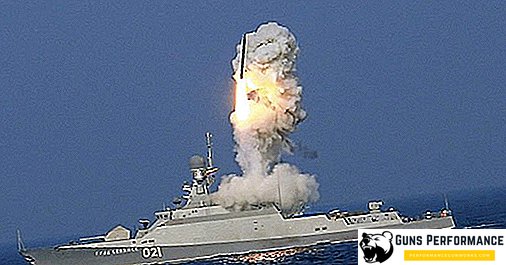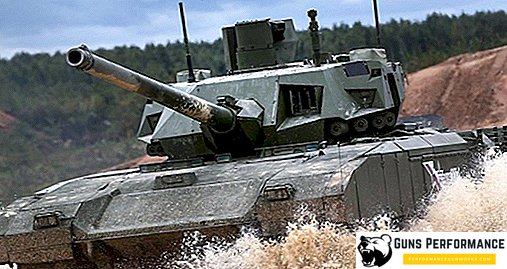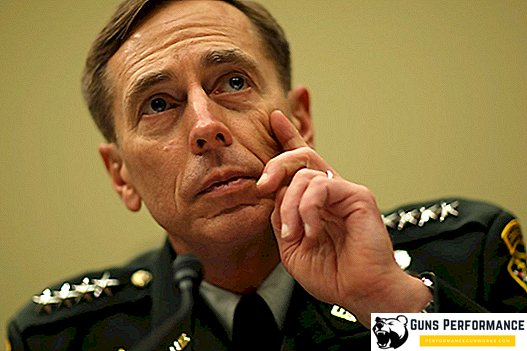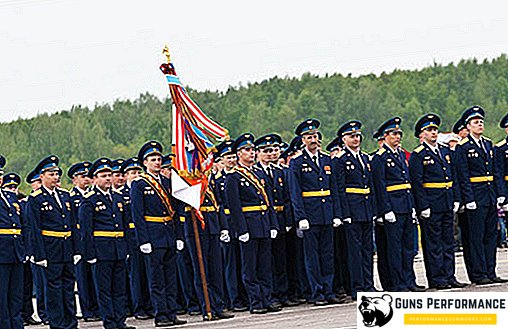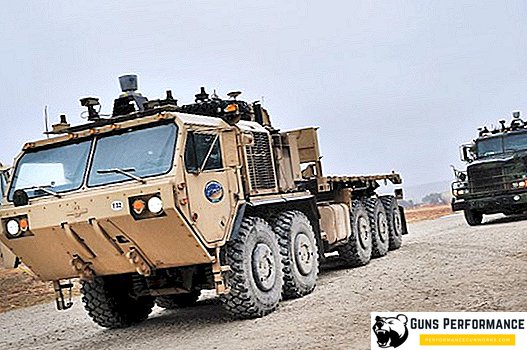The Republic of Turkey is a relatively young state located in southwest Asia. It was formed in 1923 on the site of the central provinces of the once powerful and majestic Ottoman Empire. For five hundred years, the entire Middle East, North Africa and Southern Europe were within its sphere of influence. The fate of the Muslim world and part of European politics were decided on the shores of the Bosphorus.
The modern Turkish state and the seat of the president
The Ottoman Empire, participating together with the countries of the Triple Alliance in the First World War, suffered a severe defeat. The huge state could not cope with the consequences of defeat, could not withstand the economic and political tensions. As a result of increasing centrifugal political processes, the empire fell apart. Only the central part of the once great empire - Asia Minor - retained its own statehood. Here, on the site of the central provinces of the Ottoman Empire, a young Turkish state emerged, independent and independent. The remaining territories went to the winning countries as a prize, becoming for many years colonies of European states.
After the end of hostilities, the national liberation movement spread over almost the entire territory of the empire. However, if in remote provinces the British and French armies took control, the Turks in Asia Minor decided their own destiny.
Despite the fact that the era of the omnipotent government of the Sultan in the Ottoman Empire ceased to exist in 1909, the monarchy was officially abolished in 1921, when the National Assembly adopted the first constitution. It was the first time when the post of the President of Turkey appeared, which together with the Prime Minister should represent the supreme and executive authorities. After unsuccessful attempts of monarchical circles to include in the text of the constitution articles on the restoration of the monarchy, the last Sultan Mehmed VI left the country. These events led to the fact that as early as October 29, 1923, the Republic of Turkey was proclaimed by the Grand National Assembly. In the same year, the chairman of the People’s Party and the chairman of the Grand National Assembly, Mustafa Kemal Pasha, became the first president of the new Turkish state. The status of the President of Turkey was consolidated by the new Constitution of the country, adopted in 1924. In the same year, the Ottoman Caliphate ceased to exist.
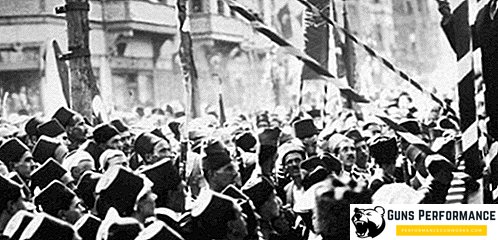
In accordance with the Turkish Constitution of 1924, the President of the Republic was elected by the Grand National Assembly. The main function of presidential power is the representation of the Republic of Turkey on the domestic and international arena. The term of office of the newly elected head of state was set at 5 years. All executive power in the country was transferred to the competence of the Ministerial Council, headed by the Chief Minister. Despite the representative format of the president’s powers, the head of state had some levers of influence on the state of affairs in the state. The competence of the President of the country was the supervision of the actions of all branches of the executive. Supervision was carried out through the Constitutional Court, the composition of which was mainly formed at the request of the president.

In the future, the status of the president has undergone changes due to the internal political situation. Emphasis was placed on strengthening the role of the presidential vertical of power in the life of the country. The Head of the Republic got into his hands practically all the main instruments of government. Until 2007, the election of the president of the country took place within the walls of the Turkish parliament. Moreover, the presidential term under the Constitution of 1982 was increased to 7 years. Only since 2007, when substantial amendments were made to the Constitution, has the procedure for electing the head of state changed. The president was elected by direct secret ballot of all citizens of the Republic of Turkey.
In accordance with the provisions of the Constitution, a person who meets the following requirements may become a president of the country:
- age not younger than 40 years;
- compulsory higher education;
- lack of public office and membership in one of the political parties.

Despite significant restrictions in terms of political affiliation, almost all the presidents of the country headed the main political parties in Turkey. The absence of a party ticket did not affect the policy of the president regarding the chosen course. In most cases, it was at the expense of strong party support in the parliament that Turkish presidents exercised their powers.
As a result of changes affecting the presidential power vertical, the term of office was decided to be increased to 7 years with the possibility of holding office for two consecutive terms as a result of re-election at the national elections of the Head of State.
Significantly changed the rights and duties of the head of state. The new amendments strengthened its role in the legislative field, presidential decrees received the force of legislative and regulatory acts, the orders of the head of the Republic in the area of control over the activities of the executive power are now advisory in nature.

The President of Turkey realizes his duties through the mechanism of interaction with the executive power and the parliament of the country. However, some decrees of the head of state are subject to agreement with the Prime Minister and relevant ministers. This rule is enshrined in the Constitution of the country.
The president can lose his position only as a result of a parliamentary decision. Dismissal from office may be carried out only as a result of evidence of high treason. The decision of the parliament will be valid if there are three quarters of the votes of the parliamentarians during the voting.
Presidents of Turkey from the moment of the existence of the Republic to the present day
In total, over the years of the Republic’s existence, there are 17 people in its history who held the highest post in the country and served as Turkish President. They were full-fledged persons elected as a result of voting in parliament, acting heads of state, and also holding the post as a result of a military coup. If we talk about the presidential position in chronological order, the list of heads of state of the Republic of Turkey is as follows:
- Mustafa Kemal Pasha, who was elected to the highest post 4 times, during the years of government - 1923-27, 1927-31, 1931-35, 1935-1938;
- Ismet Inonu, who also held the post 4 times in 1938-39, in 1939-43, in 1943-46, in 1946-1950;
- Mahmoud Jelal Bayar, who became president of the country three times in 1950-54, in 1954-57, in 1957-60;
- Jemal Gursel - 1961-66;
- Czewdet Sunay, who served 7 years from March 1966 to March 1973;
- Fahri Sabit Koruturk, who ruled in the years 1973-80;
- Ahmet Kenan Evren - 1982-89;
- Khalil Turgut Ozal - 1989-93;
- Sami Suleiman Gundogdu Demirel, who served for 7 years from May 1993 to May 2000;
- Ahmet Necdet Sezer, who served as Head of State from 2000 to 2007;
- Abdullah Gul, President of Turkey in 2007-14;
- Recep Tayyip Erdogan, elected in 2014 and holding the post to date.

In certain periods, political organizations were in power. Thus, in 1960, during an armed military coup, all the supreme power in Turkey passed into the hands of the National Unity Committee. This collegial body has nominated its leader, General Jemal Gursel, to the presidency. The formal election of a new president in the parliament took place on October 26, 1961.
A similar situation with the change of power occurred in Turkey after 14 years. Another military coup put an end to the period of political instability that swept the country after the end of the presidency of Fakhri Sabit Koruturk. After taking the post of head of state Ihsan Sabri Jaglayangil, in September 1980, he was overthrown by the military, who in turn put forward their own candidate. The head of the National Security Council, General Ahmet Kenan Evren, two years later, in November 1982, was appointed President of the country.

Ataturk's place in the history of the Republic of Turkey
The most famous person in the new history of Turkey is the first president of the Republic, Mustafa Kemal Pasha. For his merits and contribution to the transformation of Turkey into the strongest regional state, the first president was awarded the honorary title - Ataturk (father of the Turks).

Mustafa Kemal had a heroic biography. As a military man, he managed to prove himself during the defense of the Dardanelles from the Anglo-British forces in the years 1915-16. Despite the defeat of Turkey in the war, the military felt their considerable political weight and respect for the majority. As a result, Kemal, in the rank of general, managed to lead the national liberation movement, becoming the head of the most prepared and combat-ready armed units. The goals and objectives that Mustafa Kemal set for himself in this struggle, eventually became the main points of the ideology of the Turkish state.

The People’s Party headed by him has become the leading political force in the country. Mustafa Kemal Pasha himself became the Chairman of the Grand National Assembly. The next stage in his career followed Kemal’s election in 1923 as President of the Republic of Turkey. Among his achievements should be attributed the reforms that laid the foundations for the transition of the Turkish state from the religious-monarchist sultanate to a secular power. The most significant transformations are:
- the introduction of Latin;
- the empowerment of women;
- development and adoption of a new Civil Code.
Especially noteworthy is that Kemal, being an atheist, was jealous of preserving the traditions of Islam in the country. The basis of his domestic policy was the separation of religion from the church.
Mustafa Kemal is the only country leader who has been at the helm for such a long time. Beginning in 1923, he held the post of Head of State. He was re-elected four times as President. During his lifetime, Kemal received from Parliament the official title of Atatürk - the father of the Turks, which indicates the indisputable authority that Kemal enjoyed in his own country. The last time the inauguration of Mustafa Kemal Pasha was held on March 1, 1935 in the parliament building. Despite the fact that for such a long period of his reign, Mustafa Kemal became a de facto dictator, the Turks honor their first president, honoring him nowadays.

The first President of the Republic of Turkey died on November 10, 1938 at the age of 57. With the death of Atatürk, his influence on the life and development of Turkish society did not disappear. The policy of peaceful transformations of the Turkish state, conducted by Kemal during his life, later became a whole ideology - Kemalism, which is the official political doctrine of the Turkish state. The six points of Kemalism, enshrined in the text of the Constitution of the Republic of Turkey in 1937, are interesting:
- republicanism;
- nationalism;
- secularity;
- nationality of government;
- reformism;
- state control over the country's economy (statism).
Other famous personalities who served as president of the country
The next president after Atatürk, worthy of a place in the history of the state, is Ismet Inonu. The country was in his hands from November 1938 to May 1950. During the reign of Inon fell the most difficult period in the new history of Turkey. The Second World War, which broke out in 1939, made significant adjustments to the foreign policy of the state, which could once again turn into a deplorable state for Turkey. The second president played a significant role in this. His policy of seeking out in front of the strongest states and militarization brought the country to the brink of a social and political catastrophe and economic bankruptcy. The attempt of the second president to reverse the course of undertakings and reforms begun during the rule of Ataturk was perceived as extremely negative in society.

Among his merits can be attributed to the preservation of Turkey’s neutrality position during the Second World War. At the end of the war, one of Ismet Inon’s initiatives was the implementation of an agrarian reform in 1945. The next step as president was the introduction of a multiparty political system in the country. For the first time in the lifetime of the presidential power in Turkey, the head of state faced serious opposition resistance.
In the new history of the Turkish state there were many bright personalities deserving individual lines. That only is the period of the rule of Jemal Gursel, who came to power as a result of a military coup. It was at that time that Turkey found itself in an acute military-political crisis. The coming to power of the military allowed the country to restore the balance of political forces and save the economy. Being a military man, Jemal Gursul at the same time proved to be a progressive and effective politician. His early departure from the political arena was associated with poor health.

In September 1980, Turkey was shocked by another military coup, plunging the country into chaos, political repression and instability. General Ahmet Kenan Evren, who led the mutiny, became president in 1982 with unlimited powers. The period of his rule turned out to be the blackest time of the new history of Turkey, during which hundreds of thousands of citizens were behind bars, thousands of people were expelled from the country or were missing.
Significant place in the history of the political beau monde of Turkey is Sami Syuleiman Gundogdu Demirel. This politician is considered one of the most successful for the whole existence of the Turkish state. In total, Suleiman Demirel was in leading positions, including the post of prime minister, for more than 25 years. The apotheosis of his career was his election in 1993 to the presidency. During the years of Demirel’s rule Turkey has managed to achieve great success in the economy. The policy of industrialization conducted with him brought Turkey to the number of regional economic leaders. Turkey is becoming the political leader of the Muslim world, competing for leadership with Islamist Iran and the royal government in Saudi Arabia.

The current president of the country Recep Tayyip Erdogan is one of the most prominent personalities in modern history. Charisma, secular education and excellent business acumen allowed the new president of the country not only to achieve significant results in the foreign arena, but also significantly strengthen the presidential power in domestic policy. His Party of Justice and Development is now one of the most numerous in the country, having noticeably pressed on the political Olympus the oldest and most titled Republican People's Party. Despite his commitment to Europe, Erdogan tries to pursue an independent foreign policy. Its main goals are to achieve a balance on the scales of world politics, where Turkey is assigned the role of a buffer between Western civilization and the Muslim world.

The activities of Erdogan in the presidency in recent years is connected with an attempt to establish an authoritarian system in the country. In fact, today the President of Turkey has voice of speaker, which is aimed at strengthening the ruling regime. The attempted military coup in 2016 only strengthened the position of the current president, eventually giving him extensive powers and instruments of influence.
Presidential power in Turkey is one of the main instruments of government. Turks have always experienced a commitment to a strong state power, so the presidency, despite its limited powers, is the main leading position in the country.

The official seat of all the presidents was the complex of buildings in the government quarter of Ankara, which since 1923 has been the official capital of the Republic of Turkey. New residence of the President of the country - Presidential Palace in Ankara. The grand building was built in 2014 and became the official seat of the current Turkish President Recep Erdogan.
Here are the apartments, the reception of the president, the office of his office and a number of other important state structures. The construction was built on a plot of land that had until this time been part of the Atatürk Forestry, donated to the state by the First President of the country. In terms of its scale and richness of decoration, the presidential palace resembles the pompous constructions of the dictatorial regimes of Romania, in Libya and Iraq.




